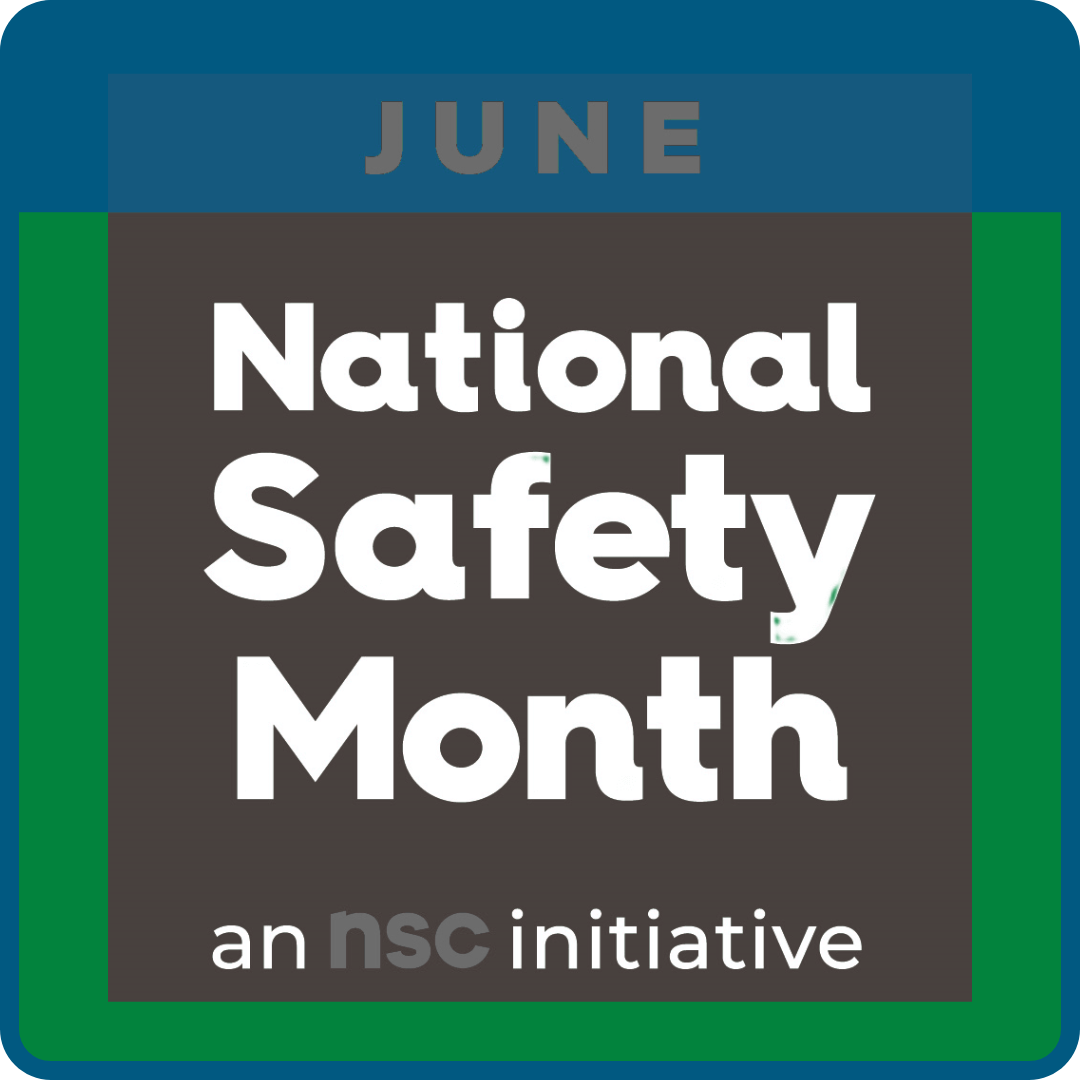
Think Safe, Work Safe, Live Safe: A Guide to Everyday Safety
This month, during National Safety Month, we're focusing on ways to further develop our culture of Safety by identifying ways to think safe, work safe and live safe.
Safety isn’t a checklist item or a monthly training requirement—it’s a mindset. The theme “Think Safe, Work Safe, Live Safe” is a powerful reminder that safety must be a constant priority, both at work and at home. When we put Safety first, we develop habits that protect ourselves and others. By working safely, we maintain productivity while reducing risks. And by living safely, we ensure that our homes, our families and our communities remain secure and healthy.
Let’s break down how we can apply the Think Safe, Work Safe, Live Safe mindset in everyday situations—with practical examples to help you turn awareness into action.
THINK SAFE: AWARENESS FIRST
Thinking safely begins with being proactive, identifying risks, and making conscious decisions that prevent harm. It’s about staying one step ahead of danger by cultivating a habit of situational awareness. Some examples might include…
At Work:
- Job Safety Analysis (JSA): Before starting a new task—especially in high-risk environments like manufacturing, pause to evaluate potential hazards. Ask questions like: Is the equipment functioning properly? Are protective measures in place? What PPE do I need to do this job safely; is that PPE available to me?
- Mental Readiness: Stress, fatigue, or distractions can cloud judgment. Speak up if you feel unfit to perform a task safely. And, remember to take scheduled breaks and use your time off to unwind and relax.
- Report Hazards Immediately: Thinking safely also means acting responsibly. If you see a potential hazard (sometimes referred to as an unsafe condition), report it or resolve it.
At Home:
- Childproofing (or Pet): Parents should assess their home from a child’s perspective. Are chemicals stored securely? Are gates blocking stairs or falls from one level to another? Are there covers on every outlet or child locks on doors and drawers?
- Emergency Preparedness: Have you thought about what to do in a fire, power outage, or earthquake? Thinking safely involves making a family emergency plan and ensuring everyone knows it.
WORK SAFE: ACTION THROUGH PRACTICE
Working safely is about turning awareness into action. It means following procedures, using equipment correctly, and fostering a safety-first culture. A few examples…
At Work:
- Use PPE Correctly: Hard hats/bump caps, gloves, safety glasses, and harnesses only work if worn properly. Make sure all gear is used as instructed—and regularly inspected. When you need new equipment, be sure to exchange your old items for new.
- Safe Lifting Techniques: Back injuries are among the most common workplace injuries. Lift with your legs, not your back, and ask for help when lifting something that’s too heavy to lift safely (generally speaking, anything weighing 50 pounds or more).
- Attend Safety Training: Safety training is available at least monthly. Attend training courses or ask for retraining opportunities to stay current on proper procedures and to know how to respond in emergencies.
At Home:
- Ladder Safety: Whether changing a lightbulb or cleaning gutters, use ladders correctly - set them on flat surfaces, maintain three points of contact, and don’t overreach.
- Kitchen Safety: Keep knives sharp (dull knives slip more easily), use oven mitts, and never leave cooking food unattended. Working safe in the kitchen prevents fires and injuries.
- DIY Projects: Wear eye and ear protection when using power tools. Unplug tools when not in use and keep your workspace tidy to avoid trips and slips.
LIVE SAFE: BUILDING A CULTURE OF CARE
Living safe is when we’re thinking and working safely on AND off the job. It means making safety an everyday mindset, not just a workplace concern. Here are a few examples:
At Work:
- Supportive Culture: Talk about safety! Recognize others who model safe behavior. Identify safety concerns (unsafe conditions) and possible solutions (poka yokes).
- Work-Life Balance: Fatigue is a safety hazard. Taking time away from work helps you create a healthy work-life balance so you can be well-rested and alert on the job.
- Team Accountability: Look out for one another! A culture of care makes safety everyone's responsibility.
- Be Engaged: Join your Safety Committee. Participate in weekly 5S walk-throughs.
At Home:
- Regular Maintenance: Inspect smoke alarms, carbon monoxide detectors, and fire extinguishers regularly. Fix loose handrails, leaky appliances, or faulty wiring before they become hazards.
- Health and Wellness: Good physical and mental health contribute to safer living. Exercise regularly, stay hydrated, find healthy ways to reduce stress, and seek mental health support when needed.
- Community Involvement: Join local neighborhood watch programs, volunteer for community clean-ups, or attend local safety awareness events. A safer community starts with engaged individuals.
Safety is more than avoiding accidents—it’s about creating environments where people can thrive without unnecessary risk. By thinking safe, we prepare. By working safe, we protect. By living safe, we set an example for others to follow.
When safety becomes second nature in all areas of life, we create a culture that doesn’t just prevent injury—it promotes health, productivity, and peace of mind.
Coming Up: The week of June 16 we’ll share examples of how our monthly training topics fit into our theme and can be useful for all employees at every location.
Safety First. Always. And, it starts with me.
